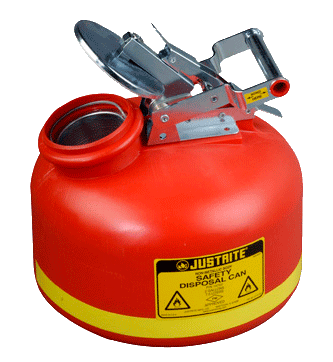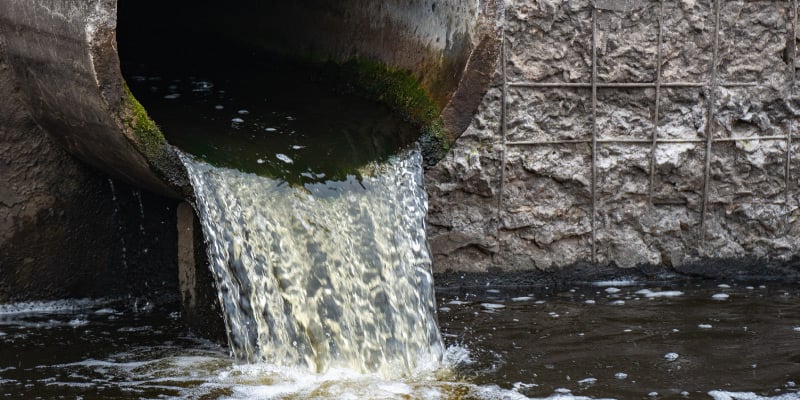How Liquid Waste Disposal Functions: A Thorough Introduction of Methods and Technologies Employed

Introduction of Fluid Waste Types
The intricacy of liquid waste kinds requires an extensive understanding of their characteristics and implications for disposal. Fluid waste can extensively be categorized right into a number of types, consisting of commercial, community, farming, and unsafe waste. Each group shows unique homes, requiring details monitoring methods to mitigate environmental and wellness dangers.
Industrial fluid waste originates from manufacturing processes and frequently consists of a range of contaminants, such as hefty metals, solvents, and organic compounds. Community liquid waste, mostly making up wastewater from households and commercial establishments, has raw material, nutrients, and virus (industrial wastewater treatment). Agricultural fluid waste, including overflow from ranches, may contain fertilizers, chemicals, and pet waste, posing dangers to water quality and communities
Unsafe liquid waste is characterized by its toxicity, sensitivity, or possible to cause harm. This category consists of substances like acids, bases, and particular chemicals that require rigorous handling and disposal protocols. Understanding these varied fluid waste kinds is essential for establishing reliable disposal approaches and ensuring conformity with environmental regulations. Proper category and characterization are essential for implementing suitable treatment strategies and reducing the negative effects on public health and the atmosphere.
Physical Treatment Methods

Testing is the first action, where bigger fragments and particles are removed from the fluid waste making use of displays or grates. This process safeguards downstream equipment from damages and makes sure smoother operation. Following testing, sedimentation utilizes gravitational pressure to different solids from fluids. In sedimentation storage tanks, heavier bits resolve at the bottom, forming a sludge layer, while the clarified liquid can be more treated.
Filtration is an additional important method that includes passing the liquid via porous products, such as sand or membrane layers, to capture smaller particles. This step enhances the top quality of the liquid, making it appropriate for subsequent treatment processes.

Chemical Therapy Strategies
Chemical treatment techniques are essential for successfully managing fluid waste, particularly in dealing with liquified and colloidal pollutants that physical approaches might not adequately get rid of. These methods use numerous chemical agents to neutralize, precipitate, or change dangerous materials into much less unsafe forms.
One typical technique is coagulation and flocculation, where chemicals such as alum or ferric chloride are included to advertise the aggregation of put on hold particles. This procedure enhances sedimentation, permitting less complicated removal of the resulting sludge. Furthermore, oxidation processes, using agents like chlorine or ozone, are used to damage down complicated natural substances and pathogens, making the waste much safer for discharge or more therapy.
Neutralization is one more critical method, which changes the pH of acidic or alkaline waste streams to neutral levels, avoiding potential damage to downstream systems and the environment. Moreover, progressed oxidation procedures (AOPs) use mixes of oxidants and ultraviolet light to weaken relentless pollutants, achieving a greater level of therapy efficiency.
Biological Treatment Processes
Organic treatment processes play a crucial role in the administration of liquid waste by using microorganisms to decay organic matter and minimize impurity levels. These procedures can be broadly categorized right into anaerobic and aerobic therapies, each using certain microbial communities to attain reliable waste degradation.
Cardiovascular treatment entails using oxygen to facilitate the break down of organic products by germs. This procedure is generally executed in triggered sludge systems, where aeration storage tanks give a helpful setting for microbial development, causing the oxidation of natural contaminants. The resultant biomass can be divided from dealt with effluent via sedimentation.
In contrast, anaerobic treatment takes place in the lack of oxygen, depending on various bacteria to break down raw material. This technique is specifically beneficial for high-strength waste, as it creates biogas, a renewable energy resource, while minimizing sludge manufacturing. Technologies such as anaerobic digesters are regularly Read Full Report utilized in municipal and industrial applications.
Both cardiovascular and anaerobic biological therapies not just reduce the ecological effect of liquid waste yet likewise help with source recovery, making them crucial components of sustainable waste management approaches. Their performance, efficiency, and versatility support their widespread application throughout different fields.
Arising Technologies in Disposal
Innovative strategies to fluid waste disposal are quickly developing, driven by innovations in innovation and a raising emphasis on sustainability. Amongst these emerging innovations, membrane layer bioreactors (MBRs) have actually gained traction for their ability to combine biological treatment with membrane filtration, causing high-quality effluent that can be reused in various applications. MBRs enable smaller impacts and a lot more effective procedures contrasted to typical systems.
One more appealing growth is the use of anaerobic digestion integrated with nutrient recovery technologies, which not just deals with fluid waste however also generates biogas and recuperates beneficial nutrients like nitrogen and phosphorus. This twin advantage look these up boosts resource effectiveness and decreases environmental effect.
Additionally, advanced oxidation procedures (AOPs) are being embraced for the deterioration of intricate organic toxins. These methods make use of effective oxidants and drivers to break down contaminants at the molecular level, offering a highly effective remedy for challenging waste streams.
Moreover, the assimilation of expert system and maker discovering in waste monitoring systems is enhancing operational performance and predictive upkeep, bring about minimized costs and improved environmental compliance. These technologies mirror a considerable change towards even more reliable and lasting liquid waste disposal practices.
Verdict
Finally, efficient liquid waste disposal requires an extensive understanding of various techniques and innovations. The integration of physical, chemical, and biological treatment techniques ensures the effective monitoring of varied waste types. Additionally, the introduction of cutting-edge innovations enhances therapy efficacy and promotes sustainability in waste monitoring techniques. By continuously progressing these approaches, it becomes feasible to deal with the growing challenges linked with liquid waste, inevitably adding to environmental management and source healing.
Fluid waste disposal is a critical element of ecological monitoring, calling for a thorough understanding of numerous techniques and innovations customized to different waste types. Fluid waste can generally be classified right into a number of types, including industrial, municipal, agricultural, and harmful waste. Agricultural fluid waste, including drainage from farms, might include plant foods, pesticides, and pet waste, positioning risks to water high quality and ecosystems.
Different physical therapy approaches play a crucial role in managing liquid waste effectively - industrial wastewater treatment.In final thought, efficient liquid waste find more disposal requires a comprehensive understanding of various techniques and modern technologies